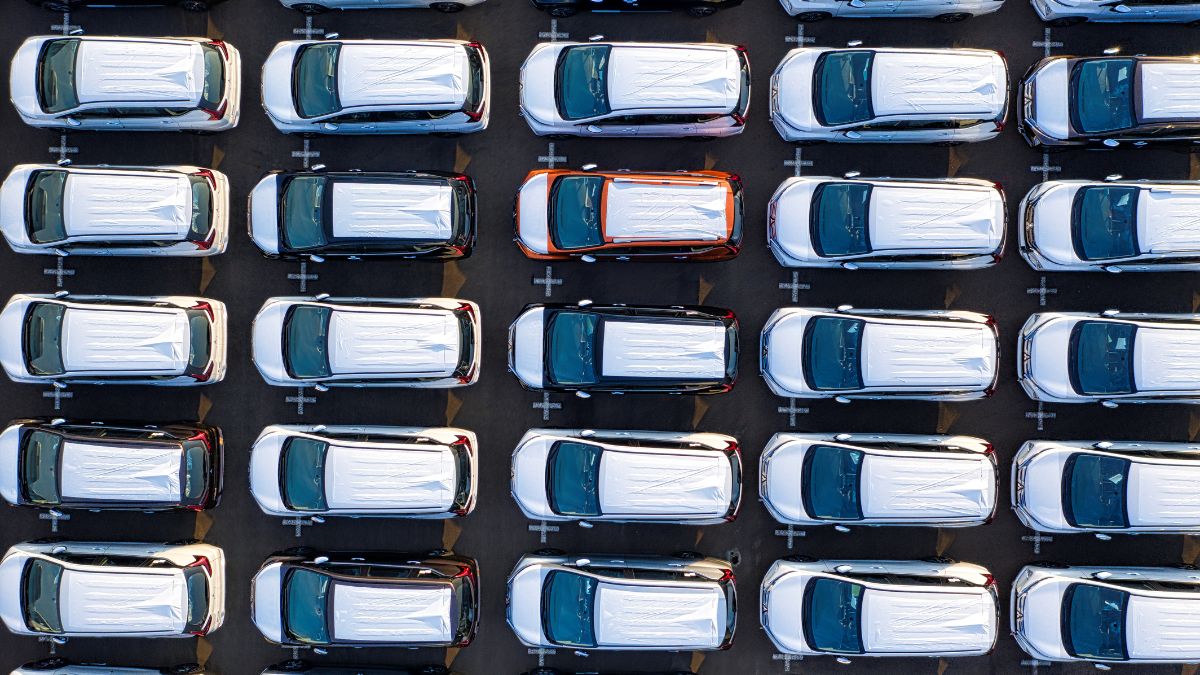
The automotive industry is undergoing an unprecedented structural transformation. Factors such as electrification, automation, shifts in regional demand, and trade conflicts—stemming from the tariffs imposed by Donald Trump in the United States—are redefining who leads the global market for automobiles, vehicles, and cars. The latest report by Statista, titled “Trends in der Automobilindustrie”, offers a clear snapshot of how the pieces will move on this highly competitive board toward 2026.
ALSO READ. Jimmy Kimmel Fired: Net Worth and Salary at ABC News
How many vehicles will be sold worldwide in 2026?
According to the Statista dossier, sales of light vehicles reached 78 million units in 2024, and the figure is expected to rise to 80 million in 2026. However, this growth is uneven and driven mainly by the Asian region, with China playing a leading role.
Global projections by region:
- Asia-Pacific: 41.9 million units estimated in 2026.
- North America: around 19.1 million.
- Western Europe: 11.8 million.
These three regions account for most of the market and will be decisive in shaping the future automotive agenda.
China leads the growth of the automotive industry
The case of China is exceptional. Over the past five years, it has consolidated a complete ecosystem of manufacturing, innovation, and commercialization of electric vehicles (EVs), enabling it to become the country with the largest number of electric cars in circulation: more than 31 million units in 2024.
In addition:
- China controls more than 50% of the global electric vehicle fleet.
- Local brands such as BYD and Xiaomi are gaining market share not only in their home country but also in emerging markets.
- Its charging infrastructure is growing rapidly, with plans to expand to more than 15 million public and private chargers by 2030.
This is not only about volume, but also about technological integration, government support, and a young, connected consumer base that quickly adopts new technologies.
Will the United States be able to compete in an increasingly electrified market?
The United States maintains a solid position, with projected sales of more than 19 million light vehicles in 2026. However, it faces a slower transition toward electrification:
- Hybrid and electric cars still represent a smaller percentage of total units sold.
- American brands such as Ford and GM have invested in new electric models but have yet to achieve the volume leadership of their Chinese counterparts.
- Tesla, the exception, remains the most important player in terms of global market capitalization, surpassing one trillion dollars in 2025.
Nevertheless, the lag in charging infrastructure, high battery costs, and internal political tensions regarding climate change limit the mass adoption of electric vehicles in the short term.
Europe and the automotive industry in 2026
Europe remains a key region thanks to its capacity for innovation and its regulatory framework that promotes the green transition. Germany, France, and Italy maintain technological leadership, although their market is not growing as fast as Asia’s.
Statista’s data outlines some trends in the so-called Old Continent:
- The European Union projects a progressive phase-out of internal combustion cars by 2035.
- Volkswagen, BMW, and Mercedes-Benz are leading developments in electrification, autonomous driving software, and connected features.
- Despite this, European consumers are showing growing skepticism about the high prices of EVs and “on-demand” digital features.
The challenge for Europe will be to maintain its reputation for quality and technology without losing ground to emerging brands that are more aggressive in pricing.
What impact do tariffs have on automotive competition?
One of the factors that will most influence the geography of the automotive market is tariffs and trade restrictions, especially between China, the United States, and the European Union.
- The EU has imposed additional tariffs on Chinese electric vehicles to protect its local manufacturers, arguing unfair competition due to state subsidies.
- The United States has also taken similar measures as part of its protectionist policy, limiting the import of Chinese vehicles.
These decisions aim to curb the expansion of brands like BYD or Great Wall Motors in the Western market, but they could also raise the price of electric cars, slowing down their global adoption.
What will happen with hybrid cars?
Amid electrification, hybrid cars continue to play an important role as a transitional technology. According to Statista:
- As of 2024, 66% of vehicles sold still use gasoline engines.
- Hybrids represent a viable alternative for markets with limited infrastructure or consumers concerned about EV range.
This type of unit is more widely accepted in regions such as Latin America, Japan, or parts of Eastern Europe, where the transformation process will be more gradual.
Which countries will set the pace in automotive innovation?
Beyond sales volume, leadership in the automotive industry of the future will also depend on the ability to innovate in areas such as software, artificial intelligence, and cybersecurity.
- Germany leads in advanced driver assistance systems (ADAS) development.
- China is making strong progress in the implementation of AI and intelligent voice assistants, both in vehicles and connected services.
- The United States, through Tesla, leads the development of autonomous driving technologies and vehicle data management.
Who will win the automotive race in 2026?
China will be the dominant country in the automotive industry in 2026, driven by its leadership in electric vehicles, hybrid cars, and technology adoption. This applies both in terms of volume and accelerated growth.
The United States will maintain its relevance thanks to Tesla and a strong domestic market, while Europe will play a key role as a benchmark in quality, environmental regulation, and software.
However, the board is in motion. Factors such as tariffs, access to strategic raw materials, and consumer behavior will be key to determining who manages to maintain their position and who will fall behind.









